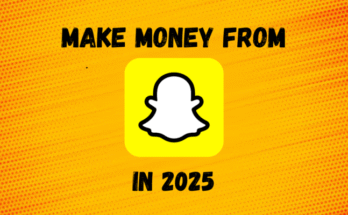The rise of AI face swap tools has revolutionized the way we create, share, and consume digital content. In 2025, these tools are not just for fun filters or viral memes—they’re being used in marketing, filmmaking, gaming, education, and even digital identity protection. Whether you’re a content creator, brand, or just someone exploring AI technology, understanding Face Swap AI tools is essential in today’s digital world.
In this article, we explore what Face Swap AI tools are, how they work, their top use cases, the best tools available in 2025, and the ethical concerns surrounding them.
What Are Face Swap AI Tools?
Face swap AI tools are software applications that use artificial intelligence and deep learning to replace or blend a person’s face with another in images or videos. Powered by technologies like deepfake, GANs (Generative Adversarial Networks), and computer vision, these tools can create realistic face transformations with minimal effort.
They can:
-
Swap faces between two people in real-time
-
Animate photos using facial gestures
-
Recreate facial expressions on other people
-
Edit video content by replacing actors or models
How Do Face Swap AI Tools Work?
Most Face Swap AI tools rely on deep learning algorithms trained on large datasets of human faces. Here’s a simplified process of how they function:
-
Facial Recognition: The software identifies and maps facial features like eyes, nose, mouth, and jawline.
-
Face Alignment: The tool aligns the face geometry of the source and target faces.
-
Blending & Synthesis: Using AI models (like GANs), the tool blends the features and textures to ensure seamless integration.
-
Rendering: The final image or video is rendered, with the source face convincingly placed onto the target.
Advanced tools can also preserve:
-
Emotions and expressions
-
Lighting and shadows
-
Skin tones and textures
Top Use Cases of Face Swap AI in 2025
1. Content Creation & Social Media
Creators on platforms like TikTok, Instagram, and YouTube use face swap tools to make viral, humorous, and engaging content. From lip-syncing as a celebrity to reenacting scenes from movies, the creative potential is endless.
2. Film and Entertainment Industry
Hollywood and independent filmmakers use AI face swap tools to:
-
Recreate historical figures
-
Resurrect deceased actors
-
Perform deepfake stunt doubles
-
Dub scenes into multiple languages with accurate lip-syncing
3. Marketing & Advertising
Brands use face swap tools for personalized marketing. For example:
-
An ad might show a customer’s face on a product demo video
-
Influencers can promote products with dynamic, AI-generated visuals
4. Gaming & Virtual Reality
In 2025, gamers can now insert their own face into characters using real-time face swap AI. It also powers virtual avatars in the metaverse and immersive VR experiences.
5. Education and Historical Simulation
Teachers and ed-tech platforms use face swapping to make historical events more engaging. Imagine watching Abraham Lincoln deliver the Gettysburg Address with modern clarity or seeing yourself as a character in a Shakespearean play.
Best Face Swap AI Tools in 2025
1. Reface AI
One of the most popular apps, Reface allows users to swap faces in GIFs, memes, and videos instantly. Its deepfake quality and ease of use make it a go-to for casual users.
2. DeepFaceLab
A favorite among advanced users and filmmakers, DeepFaceLab offers manual control over face swapping, with options for training custom datasets and high-resolution output.
3. Zao
Zao, a Chinese-based app, creates ultra-realistic deepfake videos in seconds. It gained fame for its Hollywood-quality face swaps with minimal user input.
4. FaceMagic
This tool is ideal for social media enthusiasts. Users can generate short videos, celebrity swaps, or morphing transitions with just a selfie.
5. Avatarify AI
Used mainly for live streaming and Zoom meetings, Avatarify allows users to wear the face of a celebrity or character in real time.
6. Snapchat & Instagram AR Filters
Though not full AI tools, both platforms integrate AI-powered face-swapping and augmented reality filters for fun and shareable content.
Features to Look for in a Face Swap Tool
When choosing a Face Swap AI tool in 2025, consider these key features:
-
Realism: Does the face swap look believable?
-
Speed: Is the rendering time fast enough for real-time use?
-
Privacy: Does the app store your data securely?
-
Custom Input: Can you upload your own faces or train a custom model?
-
Output Quality: Are the images or videos high-resolution?
-
Compatibility: Does it work across devices and platforms (mobile, desktop, web)?
Ethical Concerns and Legal Implications
With the rapid growth of AI face swap technology, ethical issues are a major concern:
1. Deepfake Misinformation
Bad actors can misuse face swap tools to create fake news, political propaganda, or revenge porn. In 2025, some governments have passed legislation to criminalize malicious deepfake creation.
2. Consent and Identity Theft
Swapping someone’s face without their consent can lead to legal disputes and personal harm. Most reputable tools now include disclaimers, consent checks, or watermarks to discourage misuse.
3. Data Privacy
Many face swap apps require access to facial data. Users should ensure:
-
The app doesn’t store or misuse biometric data
-
It complies with GDPR or local data privacy laws
Pro Tip: Always read the privacy policy before uploading your face or personal content.
The Future of Face Swap AI
As AI technology continues to evolve, we can expect face swap tools to become:
-
More accessible (via browser-based platforms)
-
More realistic (with 4K+ resolution and emotion mapping)
-
Integrated with AR/VR (for fully immersive experiences)
-
Personalized (custom avatars for online interactions)
In the near future, these tools may even help with mental health, allowing patients to simulate conversations or confrontations in safe, controlled environments using AI avatars.



